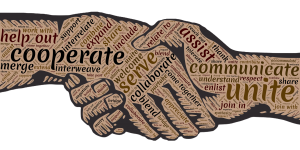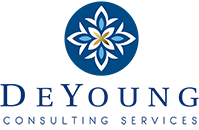
Leaders often view organizational assessments as away of evaluating the existence and effectiveness of organizational systems. And they can be a great tool for that purpose. But getting a pulse on the human factor within organizations is also an effective use of organizational assessments. In a couple of recent projects, I was asked to conduct such an assessment, including exploring employee’s perceptions of team interactions and effectiveness. One client believed that there was evidence of dysfunctional team dynamics and needed deeper insight. Since employee engagement and performance is a critical part of creating a successful internal organizational environment, an organizational assessment is the right tool to gather this information.
In Gallup’s “State of the American Workplace” report”, which just came out this month (Feb 2017), one of the main takeaways is that managing teams is becoming more complex. The report goes on to say that most employees feel indifferent about their jobs and they correlate that to the quality of employee management. It is crucial for business leaders to evaluate all the factors that impact the performance of the organization. A well-conducted organizational assessment can provide useful insights into organizational capacity, environment, performance, and motivation as a whole; but it can also drill down to specifics like how teams are affecting the workplace.
For the team dynamics aspect of an organizational assessment, DeYoung Consulting Services solicits responses on teamwork and the quality of team members’ participation in the decision making that affects them. Staff is given an opportunity to comment, clarify and contribute suggestions on aspects that could improve teamwork in the organization. In the context of an online survey, for example, questions could include:
- Rate your level of agreement with: The people I work with can be relied on when I need help.
- Rate your level of agreement with: We resolve conflict honestly, effectively and quickly.
- What would more effective teamwork look like at your organization?
We have learned that allowing team members to communicate their individual perspectives regarding team dynamics will help leaders to make adjustments, clarify roles, set more specific benchmarks or, in the case of a well-oiled team, back off. This gives the team more autonomy and ownership of the project goals. As a result, teams may feel more success and a better commitment to the organization, which cultivates retention of valuable employees.
In a presentation by Christie Brown called, The Survival Guide to Team Building, she describes what separates a team from just a group of people working together: it is that their members are “jointly accountable for performance goals.” Having no understanding of what factors make a specific team successful or unsuccessful at reaching their goals makes it harder for organizational leaders to identify those steps that can be taken to correct interactions or to motivate success.
To learn more about a common team challenge, lack of role clarity, check out my blog post on the adjacent topic, “Teaming Up for Role Clarification,” which is focused on team building activities that address ineffective team dynamics. Click here to access the blog and please feel free to contact me at karen@deyoungconsultingservices.com if you have questions on conducting an organizational assessment for your work.
